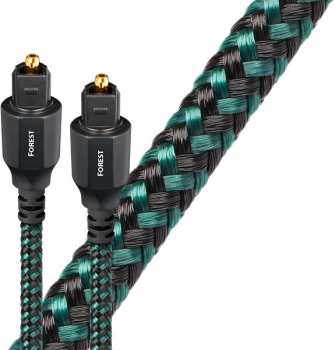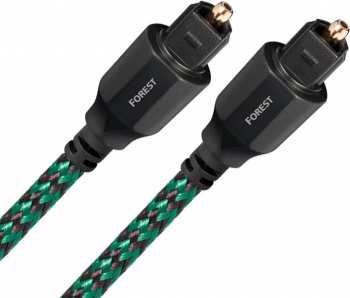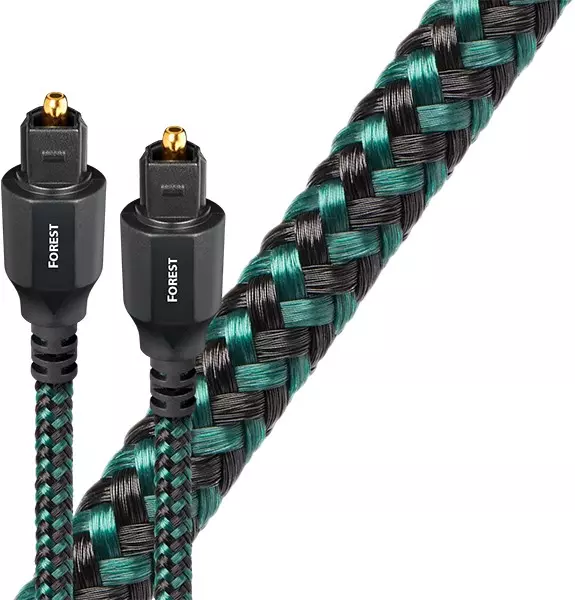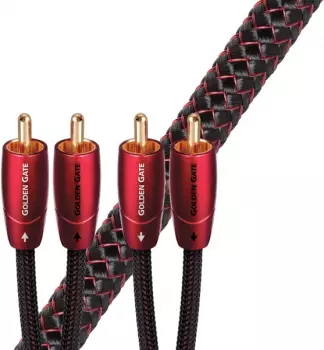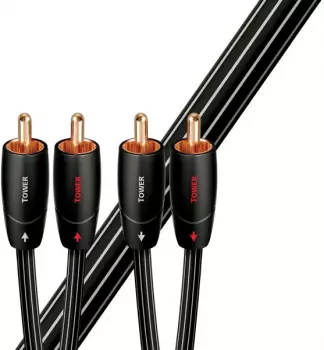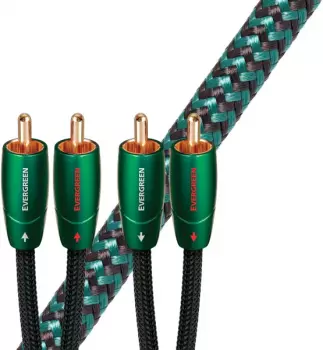Audioquest Forest Optilink optisch kabel Toslink-Toslink (TT) 0,75m
Very good optical cable with toslink - toslink connectors Higher fiber clarity with lower light scattering ensures better information transmission and less loss Precision polished optical fiber terminations Lengths of 0.75 m and 1.5 m are supplied with braid and 3 m and longer without braid with PVC capable of wall installation Wi...
Bestprijsgarantie
Als je dit product elders goedkoper vindt, compenseren wij het verschil!
meer informatie
Status
Nieuw
Prijs
55,99 €
Beschikbaarheid
Very good optical cable with toslink - toslink connectors
- Higher fiber clarity with lower light scattering ensures better information transmission and less loss
- Precision polished optical fiber terminations
- Lengths of 0.75 m and 1.5 m are supplied with braid and 3 m and longer without braid with PVC capable of wall installation
With today's HDMI, USB, FireWire and Ethernet connection technologies, the audio possibilities are almost limitless. However, these existing digital technologies are only part of the story, the issue of designing, manufacturing, choosing the best analogue interconnects and speaker cables is now as important as ever. S/P-DIF (Sony Philips Digital InterFace) technology, along with the CD format of 1983, is just as relevant today. S/P-DIF transmitted over digital coax and Toslink optical cables (EIA-J) makes them the most important cables in the electronic entertainment industry.
Toslink, due to HDMI, is not often used as a connection between a DVD player and an A/V receiver, but is common in TV sets, subwoofers and all sorts of products.5 mm Mini Optical Cable also incorrectly known as Mini-Toslink is everywhere now...from 3.5mm dual-purpose headphone jack on a Mac laptop to the inputs on the best laptops.
For all these reasons, Audioquest has improved and innovated our OptiLink line of truly high performance cables . All models and lengths are now available with both Toslink - Toslink and Toslink - 3.5mm Mini Optical connectors.
The question is "how can a fiber optic cable change the sound?" ... the answer is much simpler than with other cables. If the light source were a continuously shining laser shining into a vacuum, the light beam would stay straight and arrive at its destination in the same amount of time. Even if the LED light source were continuous in a Toslink system, the light entering the fiber optic cable would be scattered and affected by imperfections and impurities in the fiber. We can measure this as a loss in amplitude... but amplitude is not the problem, 50% of all true loss does not affect sound quality.
The problem is that scattered light will only pass through the cable after it has taken a longer route, just like a billiard ball bouncing off the edge of a table, causing it to arrive at its destination with a delay. The delayed part of the signal prevents the computer that decodes the signal from decoding the signal correctly, or may even make decoding impossible altogether. This inability to decode manifests itself first at high frequencies (not audio frequencies, so the reduced bandwidth is a measurable consequence of light scattering in the fiber. The bottom line is this: the less scattering in the fiber, the less interference in the finalthe less analogue audio signal that reaches our ears.
There is another fundamental problem in the scattering mechanism of a Toslink system. The fiber is relatively wide, 1 mm in diameter, and the LED light source is also quite large, letting light into the fiber at many different angles. Even if the filament is absolutely perfect, the signal will still spread out over time because the light rays entering at different angles have different path lengths through the cable and arrive at their destination with different delays.
An almost complete solution to this problem is to use hundreds of much smaller fibers in 1 mm bundles. Since each fiber is limited by the angle at which light can enter it, there is much less difference and much less scattering over time. This narrow entry effect is similar to the effect of a camera being able to take a picture without a lens... the picture can be made by just letting in the light in a very limited range of angles, whereas taking a lens would make the image completely impossible. Less light gets through the multi-filament cable, but the light that does enter it exits in a much smaller time span.
So we have one problem - light scattering over time...and two paths towards a better result: Less scattering in the fiber (better polymers or preferably silicon) and less scattering when the input angle is affected.
Afmetingen
Ingangen en uitgangen
Eigenschappen
| Houd er rekening mee dat de afmetingen per stuk licht kunnen verschillen | |||||
Heren |
|||||
| T-SHIRTS | T-SHIRTS MET LANGE MOUWEN | ||||
| MAAT | BORSTOMTREK (CM) | MAAT | BORSTOMTREK (CM) | ||
| XXL | 122 | XXL | 124.5 - 127 | ||
| XL | 117 | XL | 122 | ||
| L | 106.5 | L | 112 | ||
| M | 96.5 | M | 101.5 | ||
| S | 91.5 | S | 94 | ||
| HOODIES MET CAPUCHON | HOODIES MET RITS | ||||
| MAAT | BORSTOMTREK (CM) | MAAT | BORSTOMTREK (CM) | ||
| XXL | 127 | XXL | 119.5 - 124.5 | ||
| XL | 122 | XL | 112 - 117 | ||
| L | 112 | L | 104 - 109 | ||
| M | 101.5 | M | 96.5 - 101.5 | ||
| S | 91.5 | S | 89 - 94 | ||
Dames |
|||||
| T-SHIRTS | SKINNY FIT T-SHIRTS | ||||
| MAAT | BORSTOMTREK (CM) | MAAT | BORSTOMTREK (CM) | ||
| XL | 91.5 - 96.5 | L / XL | 91.5 - 96.5 | ||
| L | 86 - 91.5 | S / M | 81 - 86 | ||
| M | 81 - 86 | ONE SIZE | 81 approx. | ||
| S | 76 - 81 | ||||
| VESTEN | HOODIES MET RITS | ||||
| MAAT | BORSTOMTREK (CM) | MAAT | BORSTOMTREK (CM) | ||
| XL | 91.5 - 94 | L | 96.5 - 101.5 | ||
| L | 86 - 91.5 | M | 91.5 - 96.5 | ||
| M | 81 - 86 | S | 81 - 86 | ||
| S | 76 - 81 | ||||
Verzendkosten vanaf 2,76 €
en gratis in Tsjechië vanaf 80 €!
Bij ons vind je alles!
Meer dan
171 000
LP's en
256 000
CD
in ons aanbod
Getrouwheidskorting tot 5%
Voor geregistreerde klanten
Houd overzicht!
De meest geavanceerde tracking
van beschikbaarheid en bestellingen
